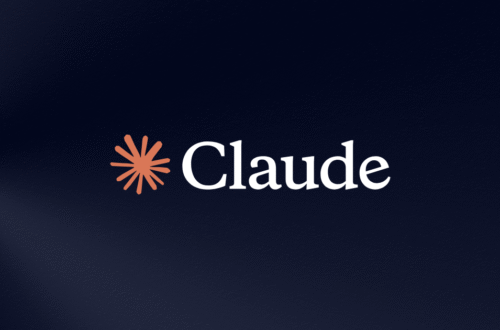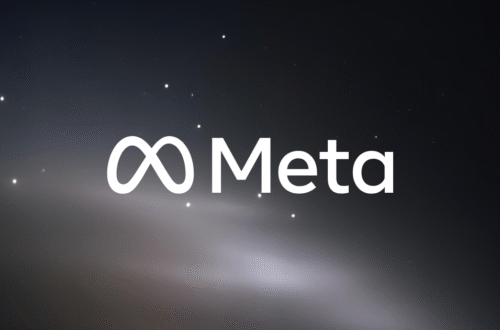Just when you thought the AI space might take a five-minute breather, Anthropic kicked down the door with Claude 3.5 Sonnet. It feels like just yesterday we were all losing our minds over OpenAI’s GPT-4o and its sci-fi voice capabilities. Now, a new contender has entered the ring, not just claiming to be smarter, but also faster & cheaper. This isn’t just another incremental update; it’s a direct shot across OpenAI’s bow. So, what’s the real story? Is Sonnet 3.5 the new default for developers & power users, or is GPT-4o’s omni-magic still the reigning champ? Let’s dig in.
Brains vs. Smarts: The Benchmark Battle
First, let’s talk intelligence. Numbers on a chart don’t tell the whole story, but they’re a decent place to start. Anthropic came out swinging, claiming that Claude 3.5 Sonnet not only outperforms its predecessor, the top-tier Claude 3 Opus, but also sets new industry benchmarks in several key areas. It reportedly tops GPT-4o in graduate-level reasoning (GPQA), multilingual math (MGSM), & coding (HumanEval).
Here’s a quick look at the scoreboard from Anthropic’s data:
- Graduate Level Reasoning (GPQA): 3.5 Sonnet scores 59.4% vs. GPT-4o’s 53.6%.
- Coding (HumanEval): 3.5 Sonnet hits 92.0% vs. GPT-4o’s 90.2%.
- Vision (MathVista): 3.5 Sonnet edges out with 58.7% over GPT-4o’s 56.6%.
Yeah, the margins are slim in some cases, but the message is clear: Anthropic’s new mid-tier model is competing at the heavyweight level. In practice, users are reporting that 3.5 Sonnet has a remarkable ability to grasp nuance & complex instructions. It’s also getting props for its more natural, less boilerplate writing style, which is a big deal if you’re tired of AI-generated text that screams, “I was written by a robot!” GPT-4o is still an intellectual powerhouse, don’t get it twisted, but Sonnet 3.5 has seriously closed the gap & in some cases, sprinted right past it.
The Real Decider: Speed & Cost
Okay, benchmarks are cool, but for anyone actually building stuff, performance & price are what really matter. This is where Claude 3.5 Sonnet makes its most compelling case.
It’s Fast. Like, Really Fast.
Anthropic claims 3.5 Sonnet operates at twice the speed of Claude 3 Opus. For developers building interactive applications, this is massive. Lag kills user experience, & a snappy response from an AI can be the difference between a useful tool & a frustrating gimmick. While direct speed comparisons to GPT-4o are tricky & depend on the workload, the general consensus is that 3.5 Sonnet is incredibly zippy. It feels faster in a side-by-side chat, delivering complex answers & code blocks with less of that dreaded typing delay.
Follow the Money
Now for the main event: the cost. If you’re running API calls at scale, a few dollars per million tokens adds up ASAP. This is where 3.5 Sonnet lands a knockout punch.
Let’s look at the API pricing for these two models:
- Claude 3.5 Sonnet: $3 per million input tokens, $15 per million output tokens. (Source: Anthropic Pricing)
- GPT-4o: $5 per million input tokens, $15 per million output tokens. (Source: OpenAI Pricing)
Output costs are identical, but that input cost is a game-changer. Claude 3.5 Sonnet is 40% cheaper on input tokens. Why is this huge? Think about any application using Retrieval-Augmented Generation (RAG), where you feed the model large documents for context. Or summarizing long meeting transcripts, or analyzing legal contracts. In these input-heavy scenarios, your costs are nearly cut in half. Plus, Sonnet 3.5 comes with a massive 200K token context window, letting you stuff even more info into a single prompt compared to GPT-4o’s 128K. More context for less money? Yes, please.
The “Wow” Factor: Artifacts vs. Omni-Interactions
Both models have a signature move. For GPT-4o, it’s the seamless human-computer interaction. For Claude 3.5 Sonnet, it’s a brilliant new feature called Artifacts.
Claude’s Artifacts: A Developer’s Dream
This might be the single coolest feature in the AI space right now. When you ask Claude 3.5 Sonnet to generate content like code, a document, or even a website design, it doesn’t just dump it in the chat window. A new “Artifacts” pane appears next to the conversation. This is a live, editable workspace.
For example, you can ask it to “create a simple landing page with a blue button.” The HTML/CSS code & a rendered preview of the page will appear in the Artifacts window. You can then say, “make the button green & add a header,” and watch it update in real time. Better yet, you can click into the code yourself, make edits, & the model will understand your changes. It’s an iterative, collaborative process that feels like you’re pair-programming with a super-intelligent assistant. For developers, designers, & analysts, this is a massive productivity boost.
GPT-4o: The Omni-Conversationalist
OpenAI’s “o” for “omni” isn’t just marketing fluff. GPT-4o’s strength lies in its incredible multimodality, particularly its real-time voice & vision. The demos of people having fluid, emotionally-aware conversations with the AI were genuinely mind-blowing. You can interrupt it, it understands tone, & it responds with incredibly low latency. You can point your phone’s camera at a math problem & have it walk you through the solution, or show it your surroundings & ask for observations. You can check out the demos on the official OpenAI site to see it in action.
While Claude 3.5 Sonnet has excellent vision capabilities for analyzing pics & charts, it doesn’t have the real-time, conversational audio/video integration that makes GPT-4o feel like something out of the movie Her. For applications that need to talk & see in real time, GPT-4o is still in a league of its own.
The Verdict: Which One Should You Use?
Alright, let’s cut to the chase. There’s no single “best” model, but there’s definitely a “best for *you*.”
Go with Claude 3.5 Sonnet if:
- Your priority is building powerful, cost-effective text- & code-based applications.
- You’re a developer who will live inside the new Artifacts feature. Seriously, it’s that good.
- Your use case is input-heavy (RAG, document analysis, summarization) & you want to save a ton of money.
- You prefer a more nuanced, less “AI-sounding” writing style for content generation.
Stick with GPT-4o if:
- Your application is built around real-time voice conversation or video interaction.
- You need the absolute best-in-class, low-latency multimodal experience for things like customer service bots or accessibility tools.
- You’re already deeply integrated into the OpenAI ecosystem & the switching cost is too high for a marginal intelligence gain.
The best part? You can try both for free on claude.ai & chat.openai.com. Kick the tires yourself before committing to an API.
Ethics, Best Practices, & The Bigger Picture
The speed of this innovation is both thrilling & a little terrifying. A model as capable as 3.5 Sonnet being released as a mid-tier option shows how rapidly the power floor is rising. We’re democratizing access to intelligence that was state-of-the-art literally months ago.
This puts a huge responsibility on us – the people building with these tools. A model that’s great at writing code can also be used to write malware. An AI that can generate convincing text can be weaponized for sophisticated phishing attacks. As we integrate these powerful systems, we have to prioritize safety, security, & ethical guidelines. This isn’t just about cool tech demos; it’s about responsible deployment. Companies like Anthropic have published extensive info on their safety-conscious approach, like their Responsible Scaling Policy, which is worth a read.
Ultimately, the release of Claude 3.5 Sonnet is fantastic news for everyone. It proves that fierce competition is pushing the entire field forward at an incredible pace, leading to more powerful, faster, & cheaper tools for all of us. Now, if you’ll excuse me, I have a web app to go build with Artifacts.


